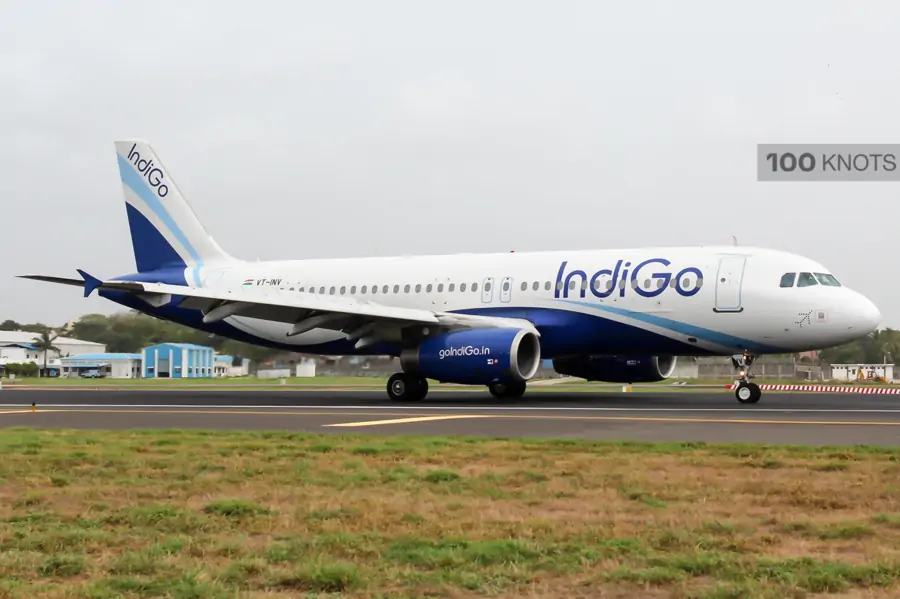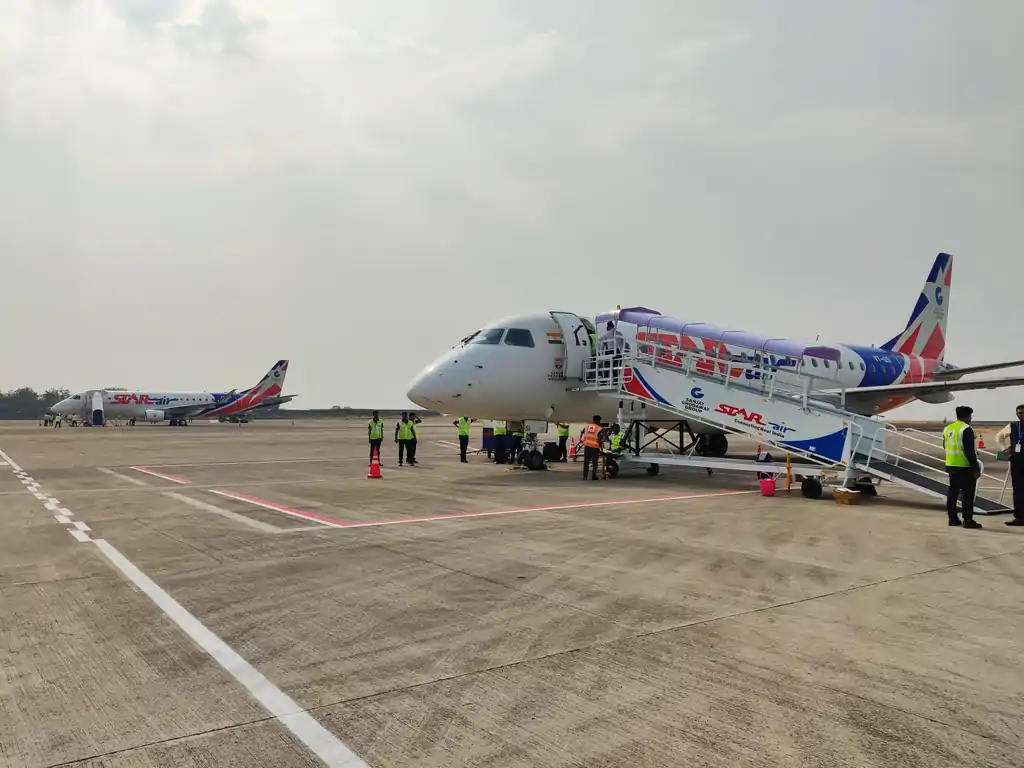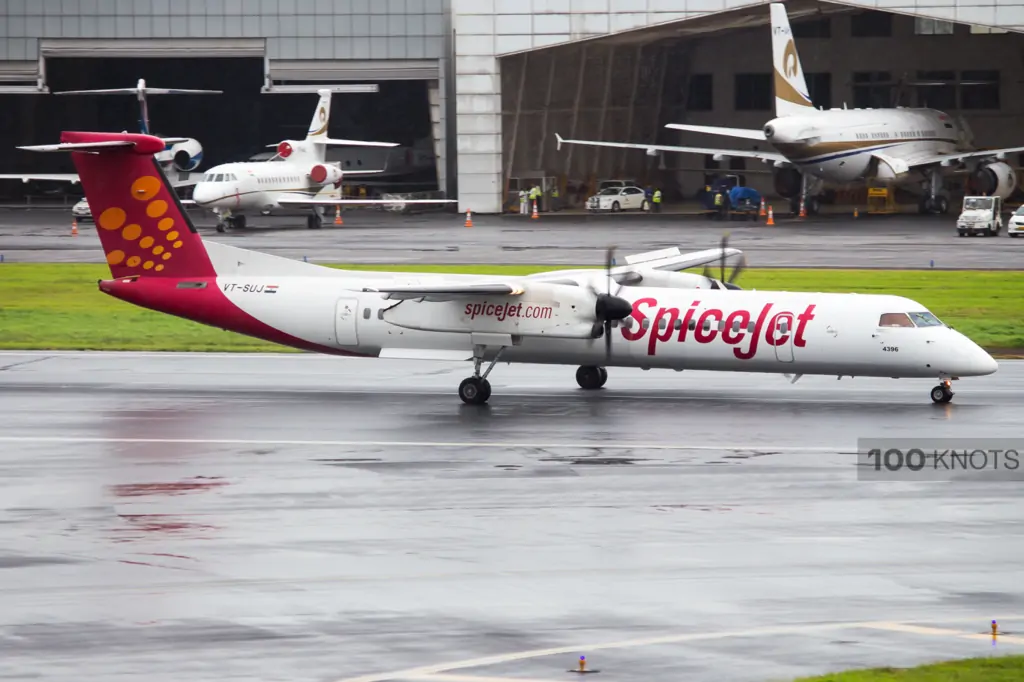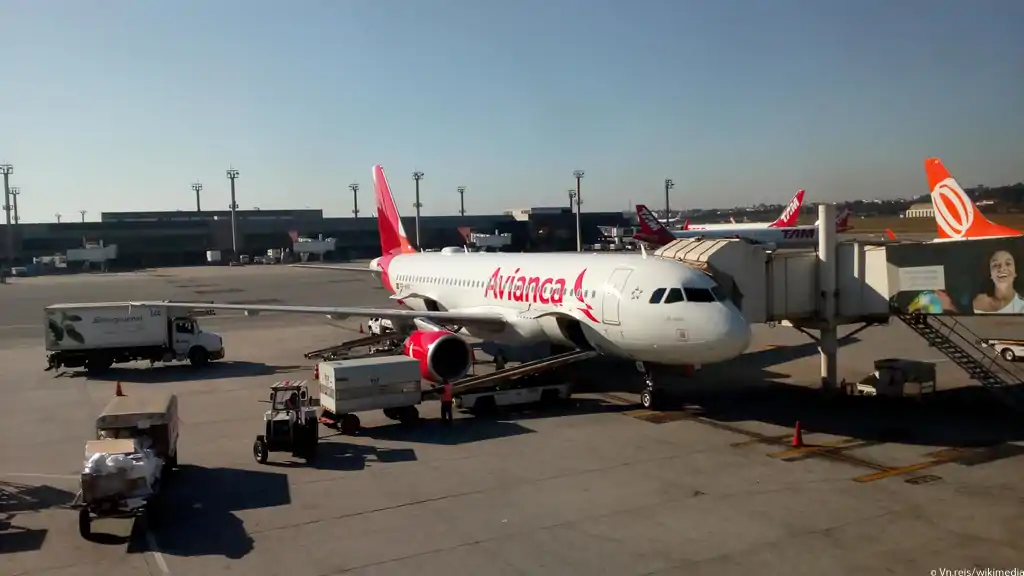The Brazilian aviation industry is on the brink of a historic transformation as the government considers a groundbreaking merger involving its three major airlines: GOL, Azul, and LATAM. This potential consolidation aims to address various challenges faced by the industry while presenting significant implications for both domestic and international stakeholders.
The Current Landscape & Motivations Behind the Merger
Brazil's aviation sector is currently dominated by a triopoly consisting of GOL, Azul, and LATAM, collectively controlling over 99% of the domestic market. Each airline operates distinct business models catering to diverse customer bases, with GOL struggling under Chapter 11 bankruptcy protection, Azul maintaining stability, and LATAM emerging as a regional powerhouse.
Reports suggest that the Brazilian government is orchestrating the merger to mitigate financial strains on the industry and prevent bankruptcies like that of GOL. By consolidating these major players into a single national carrier, the government aims to reduce reliance on state support and foster long-term sustainability.
Challenges and Hurdles
Despite the potential benefits, executing the merger faces significant obstacles. Differences in business models, labor union objections, and concerns over monopolistic control pose formidable challenges. The government is exploring incentives to garner support from stakeholders and navigate through these complexities.
Implications for Stakeholders & International Impact
The proposed merger has far-reaching implications for various stakeholders. For Brazilian consumers and businesses, the creation of a dominant national carrier could impact competition and market dynamics. Labor unions' responses will shape the outcome, reflecting the interests of airline employees.
Beyond Brazil, the merger could reshape strategic positions in the South American aviation market. US legacy carriers, including American Airlines, Delta Air Lines, and United Airlines, hold stakes and partnerships with Brazilian airlines. The consolidation may prompt reevaluations of these relationships and alter market dynamics.
American Airlines' Stake in GOL
American Airlines holds a 6.5% stake in GOL, which filed for Chapter 11 bankruptcy protection. The outcome of the merger could influence American Airlines' investments in the region and its competitive position against rivals.
Delta Air Lines' Strategy with LATAM
Delta Air Lines holds a significant 20% stake in LATAM, positioning itself strategically in the South American market. The merger's outcome may affect Delta's interests and partnerships, particularly in light of its past maneuvers to secure stakes in regional carriers.
United Airlines' Partnership with Azul
United Airlines maintains a codeshare partnership with Azul, enhancing connectivity across South America. The merger's impact on Azul could potentially affect United Airlines' operations and partnership arrangements in the region.
Conclusion
As Brazil contemplates an ambitious airline merger, the aviation industry stands at a crossroads. Balancing economic imperatives, regulatory challenges, and stakeholder interests will be paramount in shaping the future of South American aviation. The outcome of this historic consolidation could redefine market dynamics and strategic alliances on a global scale.
Read next
IndiGo begins Agatti flights
- Agatti has been in the limelight this year after PM Narendra Modi's visit and remarks by some Maldives government officials about the same.
IndiGo has commenced operations from its newly launched destination, Agatti, the airline said in a statement.
With daily direct flights between Bengaluru and Agatti, tourists can now enjoy enhanced accessibility, increased flight choices, and improved connectivity to and from Lakshadweep. Agatti is the 88th domestic and 121st overall destination to join the extensive 6E network.
Vinay Malhotra, Head of Global Sales at IndiGo, said, “We are pleased to commence operations to/from the Agatti island, IndiGo's 88th domestic destination, in Lakshadweep, India’s smallest Union Territory. The launch of these new flights not only offers customers access to the unexplored beauty of these islands, but also reinforces the archipelago's position on India's aviation map. Direct connectivity to one of the most beautiful lagoons in Lakshadweep will play a key role in unlocking the full potential of travel and tourism in the region. As India’s leading carrier, we remain committed to delivering on our promise of providing affordable, on-time, courteous, and hassle-free travel experiences.”
Known for its stunning beaches, Agatti Island is a 6 km long land terrain blessed with aquatic diversity. Home to the archipelago's only airstrip, it connects Lakshadweep to the rest of India and the world. Agatti is popular amongst those looking for a bit of deep-sea fishing, scuba diving, sailing, skiing and kayaking. The island also serves as an ideal base for exploring the uninhabited and serene isles of Bangaram, Pitti, Thinnakara, Parali-I and Parali-II, which lie in close proximity.
Agatti has been in the limelight this year after PM Narendra Modi's visit and remarks by some Maldives government officials about the same.
The current Maldives government is said to be pro-China and Modi's visit was seen by some to push Indians to travel to Lakshadweep and bypass Maldives.
Goa-based Fly91 too has started flights to the "blue lagoon" in Arabian Sea.
Read next
Mahindra Aerostructures to make Airbus plane components
- The $100 million multi-year deal to see 2,300 varieties of metallic components being made in India
Mahindra Aerostructures Pvt Ltd (MASPL) and Airbus Atlantic have signed a multi-year contract for the manufacture and delivery of metallic components and small assemblies, for the entire Airbus commercial aircraft family, including the best-selling A320 family.
Under the contract, worth approximately USD100m, MASPL will supply close to 2,300 varieties of metallic components to Airbus Atlantic in France from its manufacturing base in India. The contract adds to existing MASPL programs to deliver parts directly to Airbus at their facilities in France and Germany.
Airbus Atlantic Chief Procurement Officer José-Maria Trujillano said, "We are delighted to develop our relationship with Mahindra Aerostructures and to benefit from their robustness, their expertise and high-end technology capabilities in order to strengthen our supply base and, doing so, to contribute to securing production ramp-up for all our programs."
Vinod Sahay, President Aerospace and Défense Mahindra Group, said, “This new contract from Airbus Atlantic opens a new frontier in our existing relationship with the Airbus Group, and we are thrilled to have the opportunity to offer value across the realm of industrial maturity, digitalization, performance and sustainability”
MASPL has been a direct supplier to Airbus Group since 2015, and partners with Airbus on numerous initiatives. It has been ranked as a D2P “Challenger” for three years in the Sheet Metal Parts domain, as well as level “A” in the Airbus Industrial Process Capability Assessment (IPCA+) and has won “Best Performer” award in the 2023 Airbus Supplier Quality Improvement Program (SQIP) awards, the firm said.
A few weeks back Airbus had also signed a deal with Dynamatic Technologies for the production of door variants for the Airbus A220, the latest addition to its aircraft line-up.
Tata Advanced Systems also makes Airbus A320's cargo doors in India.
Airbus sources components worth $750 million from India, with plans to increase this figure to $1.5 billion over the next few years.
Read next
Star Air starts flights from Nanded
- Takht Sri Hazoor Sahib was so far only connected with trains to Jalandhar
Star Air has commenced flights connecting Nanded to several major cities across the country.
Passengers can now enjoy connections between Nanded and Bangalore, Delhi (Hindon), Jalandhar (Adampur), Hyderabad, Ahmedabad, and Bhuj.
“These new routes will not only benefit the residents of Nanded and other destinations but also contribute to the overall development of the region by boosting tourism and facilitating economic growth,” the airline said.
Star Air has been awarded 40 new routes under the centre’s UDAN 5.0 scheme and these routes are part of that scheme.
Sanjay Ghodawat, Chairman of Star Air, had said then, "We are delighted to be part of the UDAN scheme and contribute to the growth and development of regional air travel in India. These 40 new routes are a testament to our commitment to providing efficient and accessible air travel options for all. We are confident that our expansion will create a positive impact on the lives of millions and drive progress in the regions we serve."
According to The Tribune, Adampur civil airport started functioning in 2018, but flights were withheld for nearly four years, mostly because of the onset of the Covid pandemic. As per the new online schedule, the flight will take off from Bengaluru at 7.15 am and reach Nanded at 8.35 am. The connecting flight will start from Nanded at 9 am and reach Hindon at 11 am. From Hindon, it will take off at 11.25 am and reach Adampur at 12.25 pm. For the return trip, the flight will take off from Adampur at 12.50 pm and reach Hindon at 1.50 pm. After a 25 minute gap, the next flight will take off from Hindon at 2.15 pm and land at Nanded at 4.15 pm. From Nanded, it will take off at 4.45 pm and reach Bengaluru at 6.05 pm.
A lot of passengers from Jalandhar and around the region were interested in visiting Takht Sri Hazoor Sahib at Nanded but so far, there were only two trains going to Nanded.
Read next
SpiceJet to get Q400 from Nordic Aviation Capital
- Ownership of one plane transferred to the airline, will help mount more summer flights
SpiceJet is poised to receive a Q400 aircraft secured from Nordic Aviation Capital (NAC) as part of a settlement agreement inked last year, the airline said in a statement.
Under the agreement, which settles all past liabilities for the Q400s leased by NAC to SpiceJet, the airline acquires full ownership of six Q400s. The airline already has five Q400 aircraft which were earlier owned by NAC. The ownership of these planes has been transferred to SpiceJet. This agreement also heralds long-term savings for SpiceJet, liberating the airline from the obligation of regular monthly rentals for these aircraft, it added.
The sixth Q400 aircraft is en route to India from Germany and is expected to arrive in Delhi soon.
The timely arrival of the Q400 aircraft aligns with the upcoming summer schedule, enabling the airline to offer seamless connectivity and enhanced services to passengers during peak travel seasons, SpiceJet said.
SpiceJet has recently announced four major settlements with key aircraft lessors, resulting in substantial savings of INR 1252 Crore for the airline.
On March 26, SpiceJet announced a settlement with Export Development Canada (EDC), securing full ownership of 13 EDC-financed Q400 aircraft. This agreement resolved liabilities amounting to nearly $91 million, as per SpiceJet's records, leading to savings of INR 567 crore for the airline.
In addition to the EDC settlement, SpiceJet finalized three other agreements, including those with aircraft leasing firms, Cross Ocean Partners and AerCap. These settlements collectively yielded savings of INR 685 crore for the airline. Moreover, SpiceJet acquired three Boeing aircraft as part of these agreements.
SpiceJet operates a fleet of Boeing 737s, Q-400s & freighters. The cash-strapped airline has a market share of 5.6% and has been battling multiple court cases from vendors to which it owes money. The airline has stopped flights to multiple stations over the past few years.
Read next
In December 2021, Avianca Group emerged from the shadows of bankruptcy, marking a significant turning point in its century-long history. The Latin American airline, once on the brink of collapse due to the ravages of the COVID-19 pandemic, has not only survived but thrived with a daring growth strategy. Let's delve into the remarkable journey of Avianca, from the depths of financial crisis to its current position as one of South America's aviation giants.
Climbing Out of Bankruptcy
Avianca's story of resilience begins with its Chapter 11 bankruptcy filing in May 2020, a move triggered by the pandemic-induced travel restrictions that paralyzed air travel globally. Alongside peers like LATAM Airlines Group and Aeromexico, Avianca faced unprecedented challenges as passenger numbers plummeted, and aircraft remained grounded.
Under the leadership of CEO Anko van der Werff, Avianca navigated through the storm, making tough decisions such as the closure of its Peruvian subsidiary to refocus on core markets. The airline reevaluated its business strategy, recognizing the need to adapt to the changing landscape dominated by low-cost carriers.
A New Flight Path: Growth and Expansion
Emerging from bankruptcy in December 2021, Avianca wasted no time in charting a course for growth. The airline unveiled a bold strategy aimed at doubling its network by the end of 2025, signaling its intent to reclaim its position in the Latin American aviation market.
Central to its expansion plan was a shift towards point-to-point routes and the streamlining of its fleet to enhance cost efficiency. Investments totaling $200 million were earmarked for cabin renewal, with the introduction of lighter seats and increased capacity on narrowbody aircraft. Avianca also redefined its fleet composition, maintaining a hybrid model with a mix of widebody and narrowbody aircraft to cater to different market segments.
Point-to-Point Strategy Pays Off & International Expansion
Avianca's hybrid model, combining hub-and-spoke operations with point-to-point routes, proved to be a winning formula. Despite the risks inherent in such a strategy, the airline saw significant success in expanding its route network and increasing passenger traffic. CEO Frederico Pedreira emphasized the importance of agility and adaptability in responding to market dynamics, even if it meant some routes didn't meet expectations.
Avianca's ambitions extended beyond its home turf, with a renewed focus on international expansion. The relaunch of its Bogotá to Paris route symbolized a triumphant return to a market it had previously explored. With plans to compete against established players like Air France, Avianca showcased its determination to carve out a niche in the fiercely competitive transatlantic market.
Continued Success and Recognition
The airline's expansion efforts bore fruit in 2023, a historic year marked by record passenger numbers and the opening of 18 new routes. Avianca's commitment to affordability and punctuality earned it accolades, with Cirium ranking it as the most punctual airline in the world for the year.
Conclusion
Avianca's journey from bankruptcy to expansion serves as a testament to its resilience and adaptability in the face of adversity. With a strategic focus on affordability, efficiency, and innovation, the airline has repositioned itself for sustained growth in the dynamic aviation industry. As Avianca continues to soar to new heights, its story stands as an inspiring example of overcoming challenges and embracing opportunities in pursuit of success.








Comment